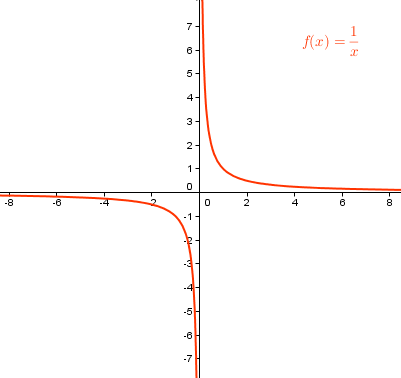Curve Sketching 3: Understanding Vertical and Horizontal Asymptotes
This is the third part of the Mathematics and Multimedia Curve Sketching Series. In the first part of this series, we have learned how to sketch linear functions, while in the second part, we have learned how to sketch quadratic functions. In this post and the next post, we will discuss about another important property of some functions that can be used in curve sketching.
In Curve Sketching 2, we have learned the different properties of quadratic functions that can help in sketching its graphs. This property is called the asymptote.
An asymptote is a line that the curve gets very very close to but never intersect. There are three types of asymptotes: vertical, horizontal, and oblique. In this post, we discuss the vertical and horizontal asymptotes.
In the graph above, the vertical and the horizontal asymptotes are the y and x axes respectively. In the remaining part of this post, we will use mostly rational functions to illustrate asymptotes.
Vertical Asymptote
The rational function above has a vertical asymptote . As x gets closer to 0 (try moving the mouse pointer from right to center or from left to center along the x-axis and observe the value of
),
either goes very large or very small (negative). From the example above, clearly, anything that makes the denominator of the rational function close 0 is its vertical asymptote. Also, some functions have more than one asymtpotes such as the one show below.
Exercise: Using a graphing calculator or a graphing software, graph
has vertical asymptotes and
.
Horizontal Asymptote
Note to Students: The study of horizontal asymptote is easier if you have already discussed limits.
If and
are polynomial functions, the rational function
has horizontal asymptote
if the the degree of
is less than the degree of
. For example, the rational function
will approach to as
becomes larger and larger. In limits,
.
If the degree of and
are equal, this will leave all terms
as
becomes larger and larger. The term that will be left are those with the highest degree. For instance,
has a horizontal asymptote
since
.
These types of asymptotes will help us more determine the appearance of the graph of the function that we are trying to sketch. In the next post, we will discuss oblique asymptotes.
By the way, a more detailed explanation about asymptote can be found in Mathematics Concepts Explained.

